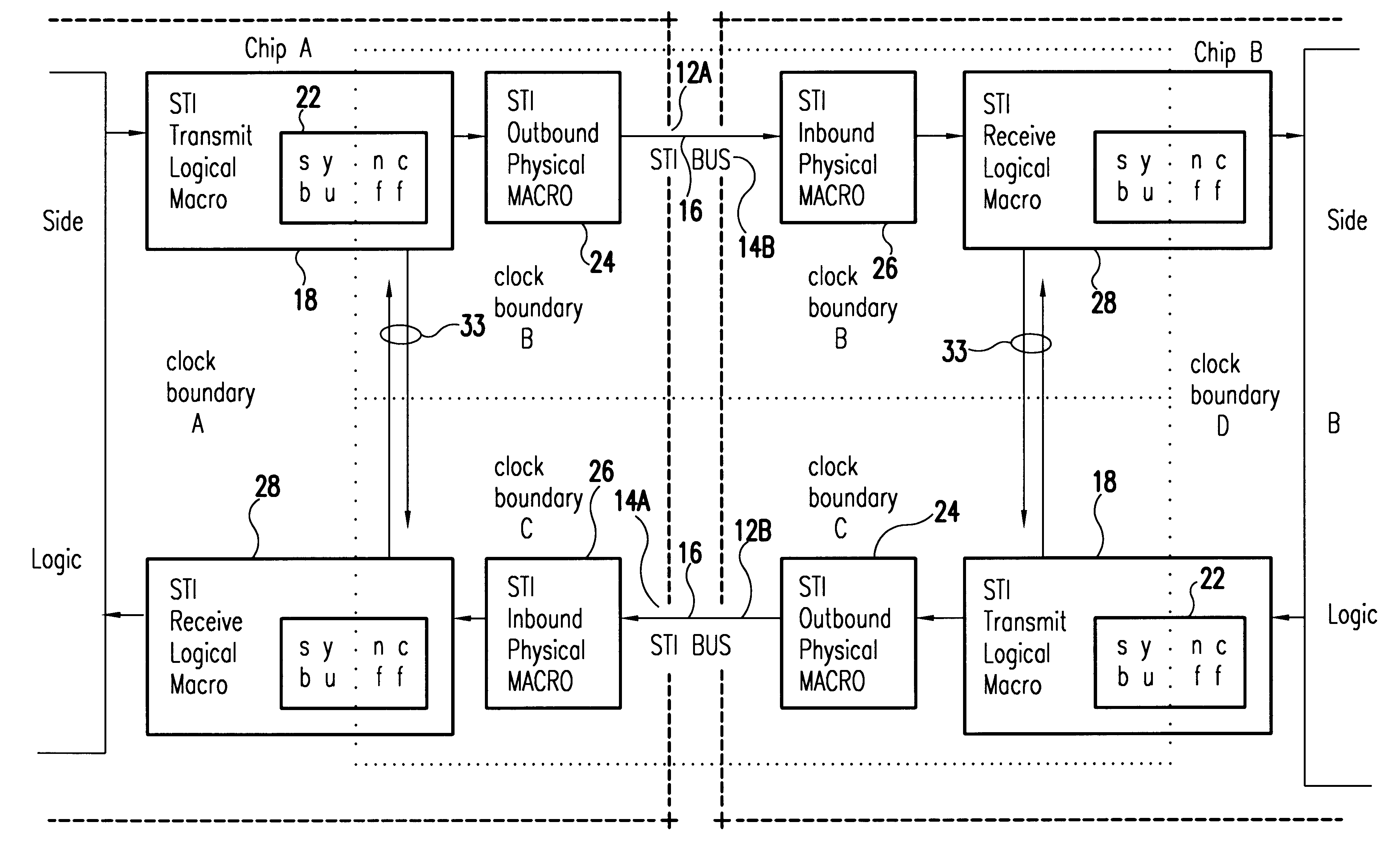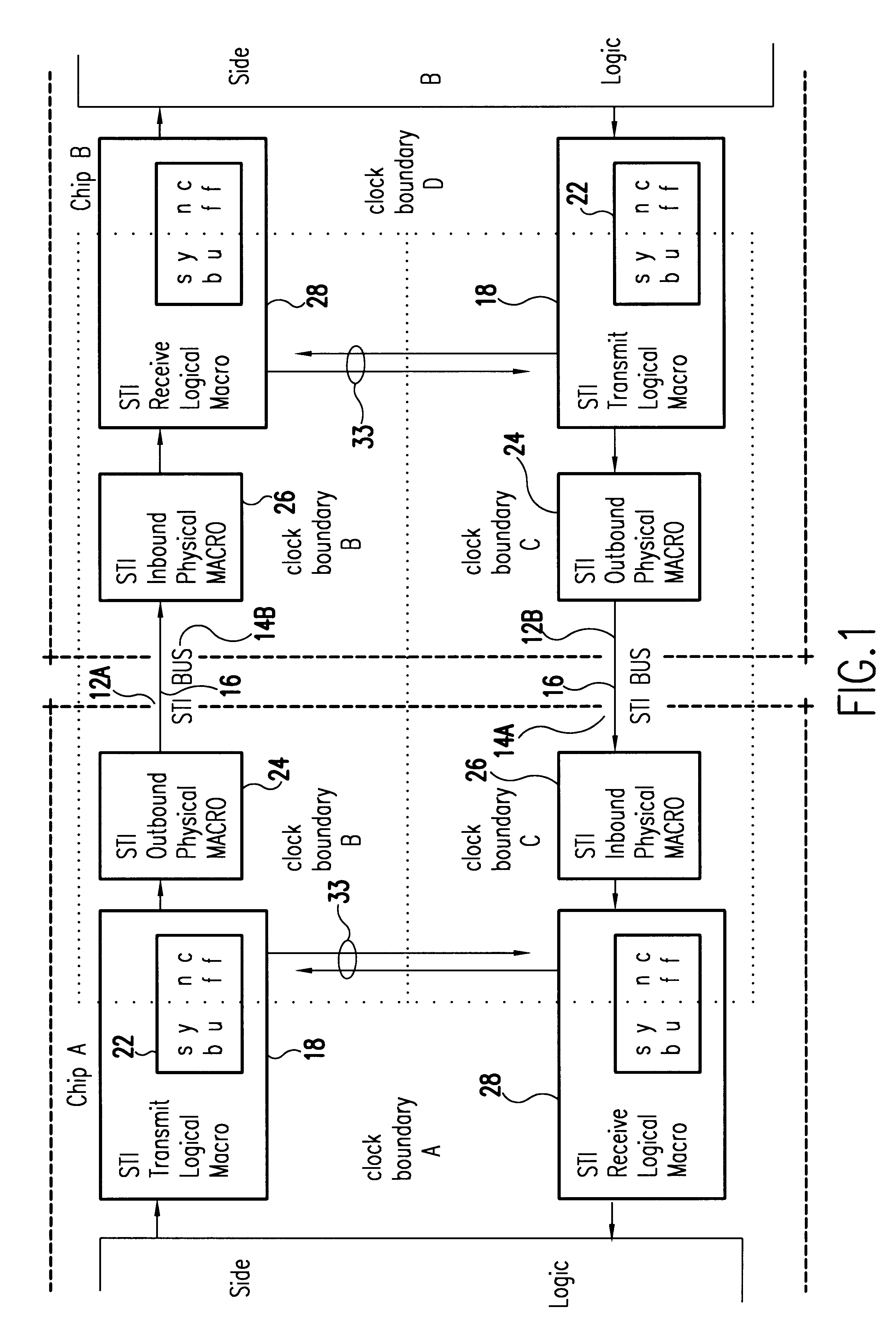Synchronous interface for transmitting data in a system of massively parallel processors
a technology of massively parallel processors and synchronous interfaces, which is applied in the direction of generating/distributing signals, instruments, error detection/correction, etc., can solve the problems of limiting the useful length of parallel busses operating at high data rates, limiting the data rate of prior art busses comprised of parallel conductors, and changing the processor clock ra
- Summary
- Abstract
- Description
- Claims
- Application Information
AI Technical Summary
Benefits of technology
Problems solved by technology
Method used
Image
Examples
Embodiment Construction
Referring now to FIG. 1 of the drawings, it illustrates one embodiment in which a self-timed interface in accordance with the teachings of this invention can be used. This exemplary embodiment of the self-timed interface provides data communications between two microprocessor chips, labeled here as Chip A and Chip B. However, as will be apparent to those skilled in the art, the self-timed interface of this invention is applicable to provide data transfer between a wide variety of components or nodes.
Chip A has a transmit port labeled 12A and Chip B has a transmit port labeled 12B. Similarly, Chips A and B have receive ports labeled 14A and 14B, respectively. The ports are connected by two self-timed interface busses 16; one for each transmission direction. In this exemplary embodiment of the invention, each bus 16 is one byte wide, and comprised of nine electrical conductors; eight conductors for data and one conductor for a clock signal.
Each transmit port (12A and 12B) includes a t...
PUM
 Login to View More
Login to View More Abstract
Description
Claims
Application Information
 Login to View More
Login to View More - R&D
- Intellectual Property
- Life Sciences
- Materials
- Tech Scout
- Unparalleled Data Quality
- Higher Quality Content
- 60% Fewer Hallucinations
Browse by: Latest US Patents, China's latest patents, Technical Efficacy Thesaurus, Application Domain, Technology Topic, Popular Technical Reports.
© 2025 PatSnap. All rights reserved.Legal|Privacy policy|Modern Slavery Act Transparency Statement|Sitemap|About US| Contact US: help@patsnap.com



